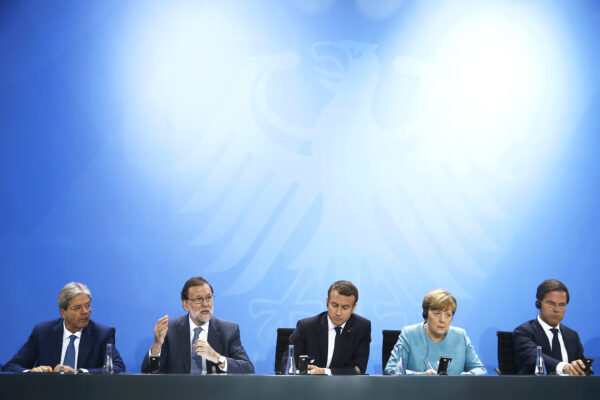
French president Emmanuel Macron made various proposals for European Union reform in a speech at the Sorbonne university in Paris today. They can be divided into three categories: difficult, doable and low-hanging fruit.
Difficult
- A common eurozone budget to fund investment and cushion economic shocks. In a concession to skeptic Germans, Macron said the goal is “not to mutualize risks” but “to reduce unemployment that affects European youth.” Still, anything that smacks of “transfer union” — the permanent subsidization of poorer member states by the wealthy — is unacceptable to Austria, Finland, Germany and the Netherlands. Macron’s only hope is strong institutional support from the EU and pressure from financial markets.
- Harmonizing social security contributions would make it easier for workers to move between countries, but, even if there were the political will for this, implementation would be enormously complex. Every country has its own pension system, its own pension funds, its own unemployment insurance, its own welfare laws. To harmonize contributions you would need to harmonize payouts — and the disparities between nations are still too wide for that.
- Reducing the European Commission from 28 to fifteen members. Few countries are willing to give up their permanent seat in the EU’s executive body.
Doable
- Harmonizing corporate tax rates, starting with France and Germany. A tough sell for the business-friendly Balts, Dutch and Irish, who understand that “harmonizing” tax rates means higher tax rates, but this is something that could be achieved in a “multispeed Europe” with German support.
- An EU military intervention force and budget in place by 2020. Here the divide is east-west as opposed to north-south. Poland and Romania tend to fight anything that could dilute the role of NATO and hence America in Europe, but with Britain on the way out this is less controversial than it used to be.
- A single European asylum office to process refugees and prevent applicants from trying their luck in different countries. The problem is Hungary and Poland, who fear this could be a stepping stone to a single European immigration policy, which would then force them to take in more refugees.
- Overhauling the EU’s agricultural policy. The devil will be in the details, but the fact that France, long the most protective of farm subsidies, is opening the discussion on reform means this is now in the “doable” category.
Low-hanging fruit
- A carbon frontier tax levied on imports. Save the planet by taking money from foreign companies? Those are our favorites things!
- A European innovation agency to boost research into artificial intelligence.
- Enabling all young Europeans to spend half a year abroad as either a student or an apprentice and creating truly European universities.
- Half the members of the European Parliament to be elected from EU-wide lists by 2024.
